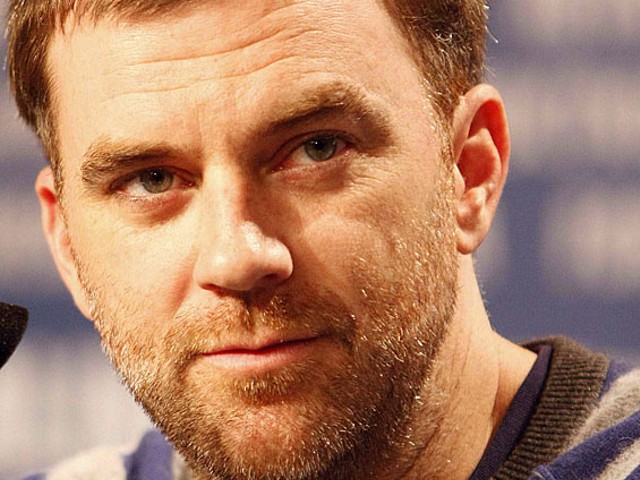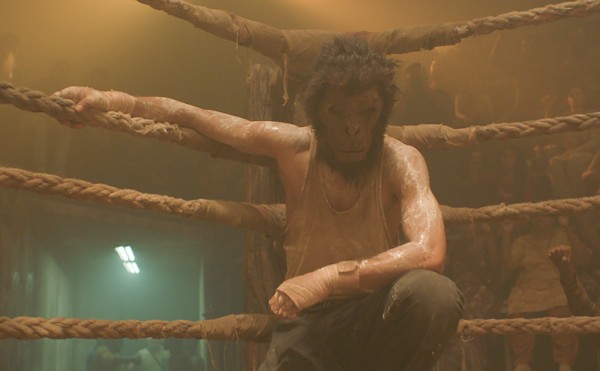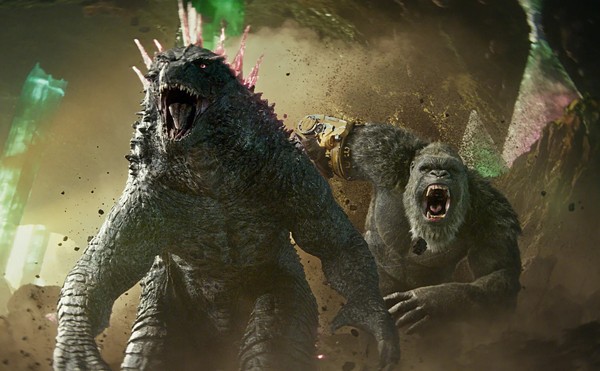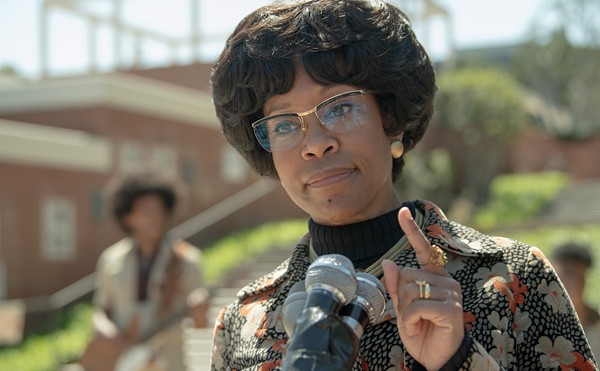Is The Master a "Scientology" movie? Oh, you bet. Don't let the denials from Philip Seymour Hoffman and Amy Adams and even, to a certain extent, director Paul Thomas Anderson himself throw you off. As Anderson reveals in this interview with Scott Foundas, he dug deep into Scientology's history to set the backdrop for his movie.
Anderson's script for The Master contains innumerable details about Scientology and L. Ron Hubbard — Hoffman's character Lancaster Dodd in the movie — but some of these details didn't make it to the screen. (Anderson told Foundas that he filmed many scenes that didn't make the final cut. Some of them will be available when the DVD version comes out.) But even with some of those details cut, The Master is still very much about Scientology's early years, and in particular, it explores three themes that spanned a period of 1951 to the mid 1970s in real life. (In the movie, everything takes place over a few months in 1952.)
1. Hubbard goes "whole track"
When L. Ron Hubbard introduced the idea of "auditing" (a form of counseling) with his 1950 book Dianetics, it experienced a brief fad as people across the country paired up to help each other remember what they had experienced in utero or during childbirth. It was Hubbard's contention that something your mother and father said during sex or pregnancy could somehow imprint itself on your mind and mess you up for life. If you could go back in time and recover those memories, you could disarm them and improve your mental faculties in the present. (This idea is clearly demonstrated in The Master as Joaquin Phoenix's character, Freddie Quell, tries to understand Dodd's book The Cause and watches prenatal counseling happening on Dodd's ship.) But re-experiencing one's birth wasn't enough for Hubbard, who then pushed back beyond conception with the notion of past lives — even claiming to remember his past billions and trillions of years down his "whole track" of existence. Not everyone who had originally supported Dianetics liked this new emphasis on past lives and space opera, and Hubbard was faced with the first of several splits in his movement — Dodd, in the film, is also trying to convince his followers to follow him down the "time hole."
2. A wealthy patron sours on LRH
In 1951 the early fad over Dianetics had faded, and Hubbard was going through a nasty public divorce while hiding out in Cuba, when a millionaire named Don Purcell offered him safe haven in Kansas. Before too long, however, that relationship had also soured, and Hubbard had to start over yet again, this time renaming his invention "Scientology" while he lived in Phoenix. (In the movie, Dodd's benefactor, a Park Avenue widower named Mildred Drummond, hosts a fundraiser and demonstration of Dodd's latest ideas, only to have it ruined by a persistent skeptic, and Dodd reacts in a way that shocks and repels Mrs. Drummond.) Throughout Scientology's history, it has attracted wealthy or famous supporters who later faded away or disavowed the church publicly.
3. The Sea Org and wedding bells
By 1967, Hubbard and his followers were so unwelcome in Britain and the United States, he had assembled a small number of ships and then ran Scientology while sailing the Mediterranean and the Atlantic for the next eight years. His family was with him, and in 1971, he officiated at the marriage of his daughter Diana aboard his flagship, the Apollo. By then, the hardcore Scientologists who were sailing with him had been named the "Sea Org," and Hubbard was developing harsh forms of discipline for his troops. He also urged them never to defend the movement but always to attack. (In the film, Dodd sails from San Francisco to New York and along the way puts on the wedding of his daughter Elizabeth. Dodd relies on his wife, Mary Sue, for her steely nerve, just as Hubbard relied on his own third wife, also named Mary Sue. Sample line for Dodd in the script, which is delivered in the movie by Mary Sue, played by Amy Adams: "The only way to defend ourselves is attack. Attack. Attack. Attack.")
What you won't see: If you're looking for the kind of material that was in a famous 2005 episode of South Park, you're going to be disappointed. Xenu the galactic overlord and "body thetans" were invented by Hubbard in 1967, and Anderson makes no reference at all to these secret teachings. (In the script, there was the barest hint of it, but not in the film itself.) Instead, Anderson is more interested in Hubbard's earlier years and how a man with such outlandish ideas managed to charm people into becoming fanatical followers. At this, the movie succeeds fabulously.
Click here to return to the feature story.





